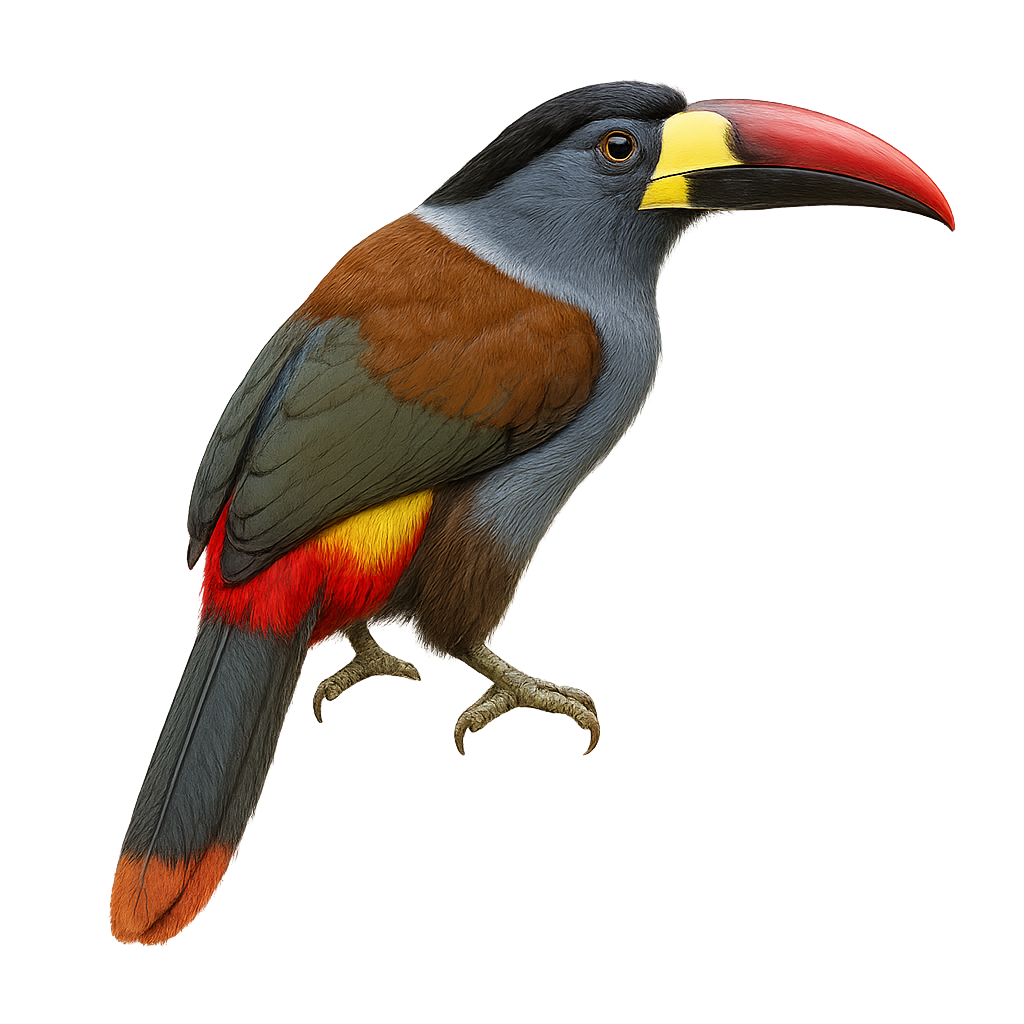Your wildlife photography guide.
Explore the gray-breasted mountain-toucan in detail, study its behavior, prepare your shots.
Where to observe and photograph the gray-breasted mountain-toucan in the wild
Learn where and when to spot the gray-breasted mountain-toucan in the wild, how to identify the species based on distinctive features, and what natural environments it inhabits. The WildlifePhotographer app offers tailored photography tips that reflect the gray-breasted mountain-toucan’s behavior, helping you capture better wildlife images. Explore the full species profile for key information including description, habitat, active periods, and approach techniques.
Gray-breasted Mountain-Toucan
Scientific name: Andigena hypoglauca

IUCN Status: Near Threatened
Family: RAMPHASTIDAE
Group: Birds
Sensitivity to human approach: Suspicious
Minimum approach distance: 10 m
Courtship display: October to December
Incubation: 16-18 jours
Hatchings: October to January
Habitat:
Humid forests, montane forests, wooded areas
Activity period :
Primarily active during the day, with peak activity in the morning and late afternoon.
Identification and description:
The Gray-breasted Mountain-Toucan, Andigena hypoglauca, is a captivating bird of the Andes, known for its colorful plumage and distinctive bill. It features a gray breast, contrasting with its vividly colored wings and head. This bird primarily inhabits humid montane forests, feeding on fruits, insects, and occasionally small vertebrates. Its ecological role is vital, especially in seed dispersal. Although its habitat is relatively stable, deforestation poses a potential threat. The mountain toucan is a social bird, often seen in small groups, emitting loud calls for communication.
Recommended lens:
400mm – adjust based on distance, desired framing (portrait or habitat), and approach conditions.
Photography tips:
To photograph the Gray-breasted Mountain-Toucan, focus on humid montane forests early in the morning when activity peaks. Use a telephoto lens of at least 400mm to capture precise details without disturbing the bird. Be patient and discreet, as these toucans can be suspicious. Look for natural perches where they rest or feed. Lighting conditions can be challenging in forests, so adjust your ISO and aperture settings accordingly.
The WildlifePhotographer App is coming soon!
Be the first to explore the best nature spots, track rutting seasons, log your observations, and observe more wildlife.
Already 1 429 wildlife lovers subscribed worldwide

